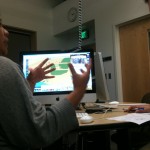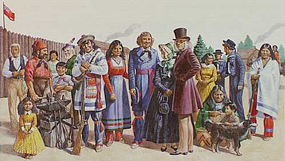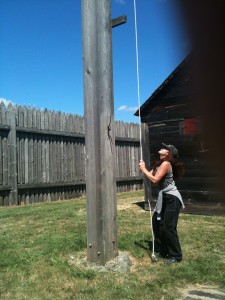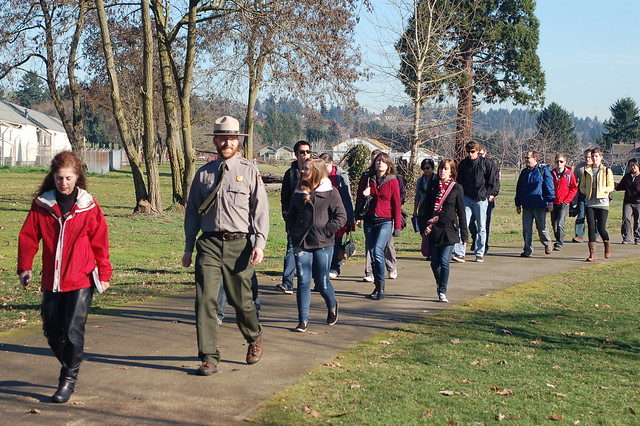 One of the most exciting things in the Mobile Storytelling class this semester is that we are among the first courses to use former WSU Tri-Cities and current University of Maryland professor Jason Farman‘s new book, Mobile Interface Theory: Embodied Space and Locative Media, published by Routledge.
One of the most exciting things in the Mobile Storytelling class this semester is that we are among the first courses to use former WSU Tri-Cities and current University of Maryland professor Jason Farman‘s new book, Mobile Interface Theory: Embodied Space and Locative Media, published by Routledge.
From the Introduction:
“The term “mobile” has been applied to technologies as early as papyrus, when the written word became transportable across a broad geographic space. Today we typically tend to attribute the word to digital devices such as “mobile” phones, GPS units, tablet computers, and gaming systems. Thus, the notion that mobile technologies are new is indeed shortsighted. Throughout history, when a medium that was once understood as geographically fixed becomes mobile, a cultural shift accompanies this transformation. As writing moved from inscriptions on stone to marks on a piece of paper or papyrus, the world changed. Not only did the human thought process become revolutionized as the process of writing could more closely match the speed of thought, but these thoughts could be spread globally. Thoughts were no longer geographically specific; that is, you didn’t have to travel to a particular place to read an inscription. Instead, the inscription came to you.
A similar cultural shift has been taking place as computing technologies are continually moving from their static location at the home or office computer and becoming mobile. As Intel announced back in 2000, “Computing, not computers will characterize the next era of the computer age.” This points to a key tenet of our current cultural shift: it is less about the devices and more about an activity. This book analyzes that activity, which is a practice of embodied space in the digital age. Here, I want to focus on mobile interfaces as my primary object of study, developing the ways that these devices work in tandem with bodies and locales in a process of inscribing meaning into our contemporary social and spatial interactions. I think it is important to define “mobile media” broadly to include not only our digital devices but also print texts, subway passes, identification and credit cards, and everyday objects that signify elements of our identity such as keys, notepads, and checkbooks.”











 See more at:
See more at: 

 One of the most exciting things in the Mobile Storytelling class this semester is that we are among the first courses to use former WSU Tri-Cities and current University of Maryland professor
One of the most exciting things in the Mobile Storytelling class this semester is that we are among the first courses to use former WSU Tri-Cities and current University of Maryland professor